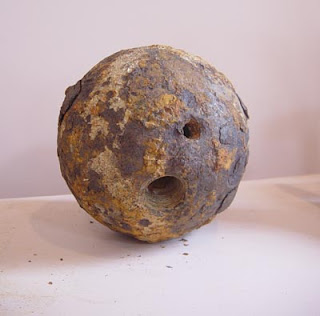The Large 'Bluestone' Building (left) Is Now A Bar & Restaurant.
It seems that his original 1885 ammunition manufacture business, 'Whitney & Sons' developed into The Colonial Ammunition Company around 1888 and was the first ordnance factory in Australasia.
In 1888 Whitney also founded CAC Ltd (Australia) at Footscray Melbourne.
At approximately 35 m high, the Auckland tower consists of a polygonal room clad in corrugated iron, supported on a steel frame. The structure was built by local blacksmiths, W. Wilson and Company and initially operated by a Mr Lylie and his two daughters, who had previously supplied the factory with a limited amount of shot from Nelson.
Shot was made by passing molten lead through a sieve at the top of the tower, which solidified as it fell into a water-filled pit in a room at its base. The shot was then polished, graded and stored in associated corrugated iron structures attached to the tower.
When dropped through a copper sieve high in the tower - the liquid lead forms tiny spherical balls by surface tension, then solidifies as it falls.. those that are "out of round" are remelted.
It seems likely that Prince Rupert of The Rhine (1619-1682) first developed 'Rupert Shot' by pouring molten lead from circular holes in a copper vessel held over water.
Link to a piece about Prince Rupert:
https://flicense.blogspot.co.nz/2015/06/gun-nut-prince-rupert-of-rhine.html
- When shot is dropped through a sieve for only a short fall - it tends to be mishapen, oval, and having a tadpole tail.
In 1769? (-December 1782 Patent) a Bristol English plumber William Watts worked-out that if the shot was made to fall a longer distance, as from a tower - the surface tension of the lead would cause it to form much more regular spheres called 'Drop Shot'.
The Auckland CAC site ceased operations in the 1980s and most of the plant was demolished for redevelopment - but the unique tower was listed and retained as a Category 1 Historic place.
During WW2 the Auckland CAC Factory employed 900 workers making various munitions as NZ's only industrial ammunition manufacturer.
CAC .303" Cartridge Made in 1945.
I expect that 'FIRST WORLD' New Zealand now once again imports all of it's lead & steel shot.😼
Marty K.










































